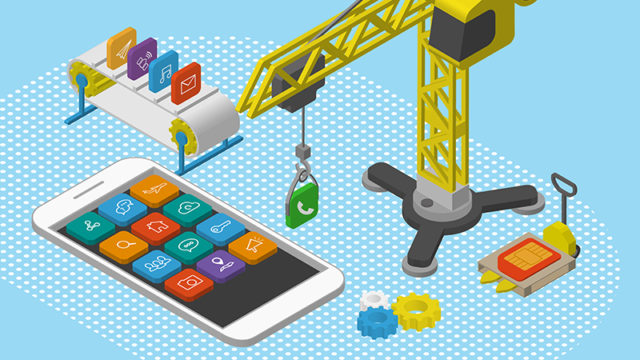How often do you change your devices for new and improved ones? And what about applications development? They say it is preferable to update an app every 3-4 months. The world of information technologies is rapidly evolving and to have correctly worked a digital solution is not enough to maintain it, you should update it or even add some new features for improving your customer’s experience.
But does it make sense to maintain a technology, that is decades away and not subject to update, it may only be redeveloped or replaced by another advanced approach. Let us give you an example where a four-cylinder engine and jet engine are compared. With the first one, you will be moving around and have low capacity on the other hand with the second one you will have high capacity and reach your destination much faster. The same parallel can be drawn between CodeIgniter and cutting-edge framework, for example, Laravel, where the former is an old engine and the latter is a jet engine vehicle that means it is maneuverable and practically unattainable to others.
So let’s look at the situation for a different angle. Like any other framework, CodeIgniter is a tool for a developer-first of all. A developer evaluates the framework in several ways:
- ease of entering the development using this this tool (easy to learn and start);
- framework range of options;
- performance of framework;
- the flexibility that a framework provides developers.
If with the first three paragraphs is not in doubt but the last one is not always a plus for the developer because the more flexibility they have the less a framework controls developer in the automatic mode. The less automatic control we have the higher the risk:
- to make a mechanical error in the development;
- take liberties and cheat.
In the first case, it hurts the speed of project development, much time will be spent from the moment the error was made until it will be found.
In the other case, it negatively affects project maintenance, especially it is a complex one where involved a team of developers. You will have a readable and supporting code as long a structure of the project and its base architecture is monitored through processes which developers should follow.
If we go back to talking about CodeIgniter then we should say that it is attracted to its characteristics for many early developers:
- simple to learn;
- good range of options (except the availability of in-built template);
- pretty well performance;
- sufficient flexibility for a developer.
All we have described above as low entry threshold to the app development industry and sufficient flexibility have led to substandard and hard to maintain code. It happened because of all those who have taken it upon themselves to work with it and did it unprofessional. Such an approach adversely affects the popularity of CodeIgniter in the development community.
But the decisive factor was the flexibility of coding and low entry barriers of framework learning that led to the inflow of low-skilled developers to the dev community. It also allows those developers to code haphazardly without following any architecture, style, and requirements.
Also, a lack of in-built template became a disadvantage it means that those developers who not divide projects on frontend and backend (API) put everything into the project. Thereby worsening the situation and ruined framework reputation.
You may ask what framework can replace CodeIgniter? Laravel could be a perfect alternative and most developers can confirm it. So we are going to overview both and outline the main important differences between Laravel and CodeIgniter.
- Support for PHP 7. The updated version of PHP 7 comes with some new features and improvements that help to increase the performance of web applications and reduce memory consumption. Both support the new version of PHP but many developers faced with issues while developing and testing CodeIgniter apps on PHP.
- Built-in Modules Many developers divide large and complex projects into several small modules to simplify and speed up the development process. Laravel is designed with built-in modularity features. It enables developers to divide a project into small modules. They can further reuse the modules across multiple projects. But CodeIgniter is not designed with built-in modularity features.
- Database Scheme Development. CodeIgniter can support some popular databases, but it cannot provide any specific features to ease database schema migration. Unlike the former Laravel simplify for developers a modification and sharing of the database schema without writing complex code. The developer can further develop a database schema of the application easily by combining the database agnostic migration with the schema builder provided by Laravel.
- Built-in Template Engine. As we told before it is one of the greatest weaknesses of CodeIgniter. Laravel comes with a simple but robust template engine like Blade. Blade template engine enables PHP developers to optimize the performance of the web application by enhancing and manipulating views.
- Routing. The routing options provided of both PHP frameworks are the same. But the Laravel features help developers to route requests in a simple way. The developers can use the routing feature of Laravel to define most routes for a web application in a single file.
- HTTPS Support. The security of sensitive information is a matter of particular importance that why most web developers prefer to use HTTPS protocol. Laravel allows to define custom HTTPs routes. The developers also have the option to create a specific URL for each HTTPS route. Laravel further keeps the data transmission secure by adding https:// protocol before the URL automatically. But CodeIgniter does not support HTTPS fully.
FAQ
To summarise
CodeIgniter is still exist but the name of this framework has become synonymous with a low-quality solution that is why we advise you Laravel as a better alternative. Both Laravel and CodeIgniter are open-source PHP framework. The developers admit that it is easier to find help online and prompt solutions while developing web applications with Laravel.
In general, PHP developers can use a range of additional features by choosing Laravel. But the beginners have to put extra time and effort to learn and use Laravel effectively. So if you are looking for the right framework for your digital solution it is better to choose the tool that will allow you to update, expand, and redesign your app easily.




